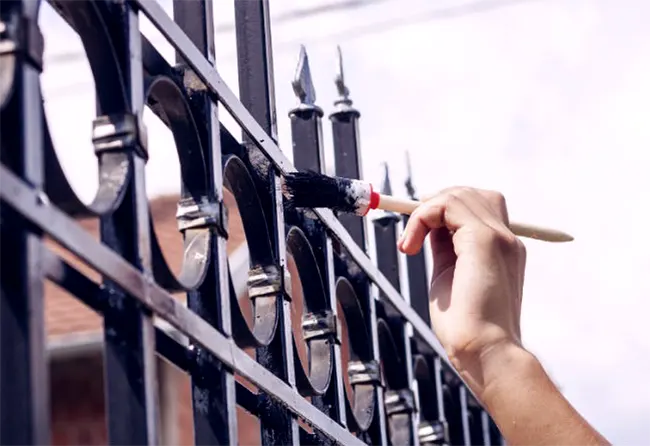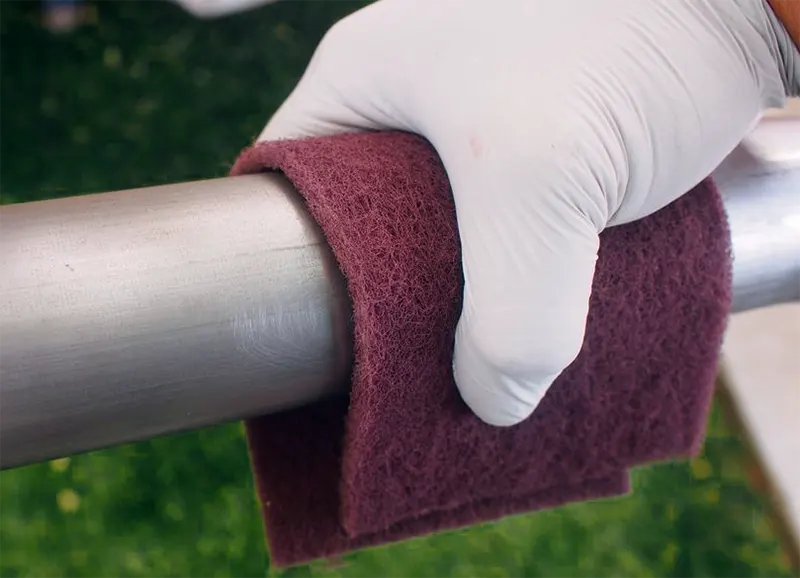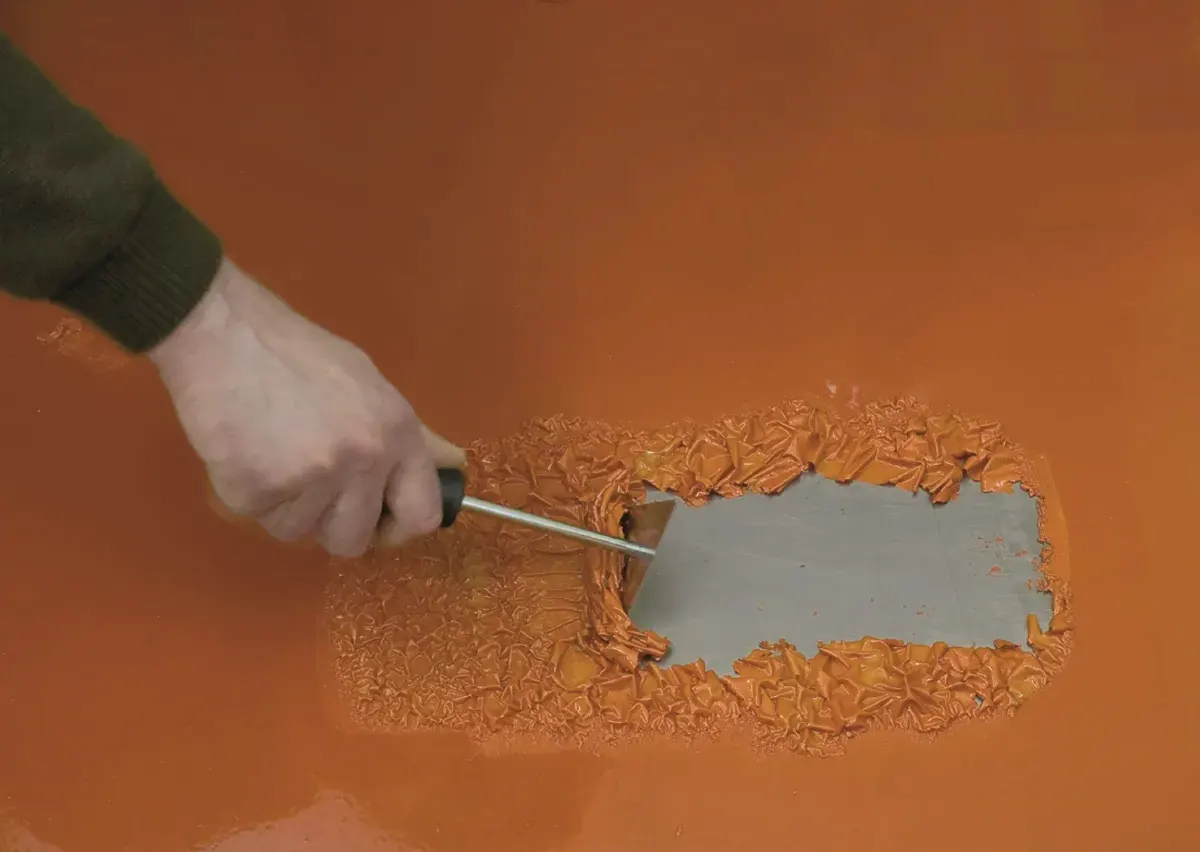Painting metal surfaces can be challenging, but with the right knowledge and techniques, you can achieve professional results. Follow along as we explore how to prepare metal for painting, ensuring the substrate is clean and smooth for easy adhesion. You’ll also learn the best ways to safely and effectively remove old paint from metal surfaces. Whether you’re tackling a small DIY project or a large industrial task, knowing these basics will save you time, energy, and costly mistakes. In addition to prep work, we also delve into common mistakes many people make when painting metal, from improper sanding to using the wrong type of primer or paint. By the end, you’ll be ready to take on any metal painting project with confidence.
What is Metal Paint?
Metal paint is a specialized type of paint designed to adhere to metal surfaces and protect them from environmental factors such as moisture, UV rays, and temperature fluctuations. Unlike standard paints, metal paint contains specific ingredients that allow it to bond effectively with metal, creating a durable and long-lasting finish. It often includes corrosion inhibitors, rust-resistant properties, and additives that help prevent chipping, peeling, and fading. Let’s take a look at the main features of Metal Paint:
- Adhesion: Metal paints are formulated to provide excellent adhesion to various types of metal, including steel, aluminum, iron, and galvanized surfaces. This property ensures that the paint forms a strong bond, reducing the likelihood of flaking or peeling over time.
- Rust and Corrosion Resistance: One of the primary functions of metal paint is to protect the underlying metal from rust and corrosion. Many metal paints contain anti-corrosive pigments and rust inhibitors that act as a barrier, preventing oxygen and moisture from reaching the metal surface.
- Durability: Metal paints are known for their high durability. They are designed to withstand harsh weather conditions, such as heavy rain, intense sunlight, and fluctuating temperatures, making them ideal for both indoor and outdoor applications.
- Variety of Finishes: Metal paints are available in a wide range of finishes, including matte, satin, gloss, and metallic. This versatility allows for customization according to aesthetic preferences and functional needs.
Be sure to pay attention to the difference between metallic paint and metal paint, which seem to be very similar in name. But there are huge differences in function and painting effects. In order to help you better distinguish them, I have specially edited a “Metallic Paint and Metal Paint Difference Blog” to help you solve your confusion.

Metal Paint Applied to Guardrails
Metal paint is a versatile coating solution that serves a wide range of purposes across multiple industries. Its unique formulation makes it suitable for environments where durability, resistance to corrosion, and aesthetic appeal are critical. Whether it’s safeguarding a metal surface against harsh environmental elements or enhancing the visual appeal of metal components, metal paint offers both functional and decorative benefits. Let’s explore some of the most common applications where metal paint plays an essential role.
- Automotive Industry:Metal paint is extensively used in the automotive sector to protect car bodies, frames, and various metal components from rust, road salts, and environmental exposure. Beyond protection, it also enhances the aesthetic appeal of vehicles with vibrant colors and glossy finishes that resist fading over time.
- Construction and Infrastructure:In construction, metal paint is applied to steel beams, railings, bridges, and other metal structures to prevent corrosion and weathering. It’s a crucial component for prolonging the life of infrastructure, ensuring structural integrity, and reducing maintenance costs. Additionally, it is used in industrial settings to coat machinery and equipment, protecting them from wear and corrosion.
- Household Items and Furniture:For household applications, metal paint is commonly used on items such as metal chairs, tables, garden tools, gates, fences, and railings. It not only adds a decorative touch but also provides a protective barrier against rust, especially for items exposed to outdoor conditions.
- Marine Applications:In marine environments, metal paint is indispensable. Ships, boats, offshore platforms, and underwater structures are all coated with specialized metal paints to protect against the severe corrosion caused by saltwater and moisture. These coatings are designed to be highly resistant to water, salt, and UV radiation, extending the life of marine equipment and vessels.
- Electronics and Electrical Components:Metal paint is also used in the electronics industry to coat components that require electromagnetic shielding, corrosion protection, or heat resistance. These coatings help protect delicate electronic parts from environmental damage while ensuring reliable performance.
- Art and Design Projects: Metal paints are popular in creative fields such as art, interior design, and architecture. They are used to create metallic effects on sculptures, wall panels, and decorative elements, adding a unique visual dimension to these projects.
When considering metal paint for a project, it’s essential to weigh its benefits against its limitations. Here’s a comprehensive look at the pros and cons:
| Feature | Advantages | Disadvantages |
|---|---|---|
| Adhesion | Excellent bonding to various types of metal surfaces, including aluminum, steel, and iron; helps prevent flaking, peeling, and blistering. | Requires meticulous surface preparation, such as cleaning, sanding, or priming; improper application can reduce adhesion quality. |
| Rust and Corrosion Resistance | Contains anti-corrosive agents and rust inhibitors; forms a barrier that protects metal from moisture, oxygen, and other corrosive agents. | Not all metal paints provide the same level of rust resistance; some may require additional coatings or specific environmental conditions to maximize effectiveness. |
| Durability | High resistance to weathering, UV radiation, and physical impact; ideal for both indoor and outdoor applications, providing a long-lasting finish. | Can be more costly than regular paints; often needs multiple layers to achieve full protection, which can increase application time and labor costs. |
| Variety of Finishes | Available in a range of finishes (matte, satin, gloss, metallic) and colors, offering flexibility to match aesthetic requirements and functional needs. | High-gloss and metallic finishes may highlight surface imperfections; certain finishes require regular maintenance to retain their appearance. |
| Application Versatility | Can be applied using various methods, such as brushing, spraying, or dipping, depending on the project’s requirements and scale. | Different application methods may require specialized equipment or skills; improper application techniques can lead to uneven coverage or defects. |
| Environmental Protection | Some metal paints are formulated with low-VOC (volatile organic compounds) content, reducing environmental impact and improving safety for users. | Not all metal paints are eco-friendly; high-VOC paints may emit harmful fumes during application and curing, requiring proper ventilation. |
Metal paint is an indispensable tool across various industries and applications, offering a combination of protection and aesthetic enhancement for metal surfaces. Its specialized properties, such as excellent adhesion, rust resistance, and durability, make it ideal for numerous uses—from automotive and construction to household and marine applications. By understanding its advantages and limitations, you can choose the right type of metal paint for your specific project needs, ensuring both performance and longevity.
How to prep metal for paint?
We already know about Metal Paint and its benefits. Now, let’s take a closer look at the preparation process—because even the best metal paint won’t adhere properly if the surface isn’t properly prepared. If you decide to paint on metal surfaces, knowing how to properly prepare them is essential to achieving a smooth, durable finish.
Preparation is more than just a simple cleaning; it involves steps that remove rust, dirt, and oils that could prevent the paint from bonding effectively. Proper preparation ensures that the paint adheres well, provides a uniform finish, and extends the lifespan of the coated metal surface. Without these steps, you risk peeling, flaking, or early corrosion, all of which diminish the appearance and performance of your metal item.
Essential Tools and Materials for Prepping Metal
Before you begin, gather the necessary tools and materials to make the process easier and more effective:
- Sandpaper or Wire Brush: For removing old paint, rust, and debris from the metal surface.
- Degreaser or Cleaning Solution: To remove any grease, oil, or grime that could affect paint adhesion.
- Rags or Lint-Free Cloths: For wiping down the metal surface after cleaning.
- Metal Primer: Essential for promoting adhesion and providing a base coat.
- Safety Gear: Gloves, goggles, and a mask to protect from dust, debris, and chemical fumes.
Step-by-Step Guide to Prepping Metal for Paint

Preparation for metal painting
Step 1: Clean the Surface Thoroughly
Start by cleaning the metal surface to remove dirt, grease, and oil. Use a degreaser or a specialized metal cleaner and a lint-free cloth to wipe down the area. Cleaning ensures that no contaminants will prevent the primer and paint from adhering properly.
Step 2: Remove Rust and Old Paint
Rust and old paint must be removed for a smooth, clean surface. Use a wire brush or sandpaper to scrape off loose rust and flaking paint. For stubborn rust spots, consider using a rust remover. The goal is to get down to the bare metal or at least to a solid, non-peeling layer of existing paint.
Step 3: Sand the Surface
Sanding is crucial for creating a slightly rough texture, allowing the primer and paint to grip the metal better. Use medium-grit sandpaper (around 120-150 grit) for this step. Sand in circular motions to ensure an even surface, paying extra attention to areas that may have been missed by the wire brush.
Step 4: Clean the Surface Again
After sanding, clean the surface again to remove any dust, particles, or remaining contaminants. This step may seem repetitive, but it is vital to ensure that no residue interferes with paint adhesion. Use a damp, lint-free cloth or a tack cloth to pick up all the fine particles.
Step 5: Apply a Metal Primer
Once the metal surface is completely clean and dry, apply a suitable metal primer. The primer acts as a bonding agent between the metal and the paint, enhancing adhesion and preventing rust. Use a brush, roller, or spray, depending on the size and shape of the metal object. Follow the manufacturer’s instructions on drying time before moving on to painting.
Safety Precautions During Preparation
- Wear Protective Gear: Always use gloves, goggles, and a mask when working with chemicals or sanding, as this will protect you from harmful dust and fumes.
- Work in a Ventilated Area: Ensure good ventilation when using primers and paints, as they can emit harmful vapors.
- Handle Tools with Care:Be mindful when using sharp tools like wire brushes or sanders to avoid injury.
Prepping metal for paint may seem like an extra step, but it is crucial for achieving a durable, high-quality finish. Proper preparation not only ensures that the paint adheres better but also helps prevent future issues like rust and peeling. Follow these steps, use the right tools and materials, and take the necessary safety precautions to get the best results for your project.
How to strip paint from metal?
In previous content, we covered pre-treatment for applying Metal Paint, as well as professional guidance for painting on different special surfaces. However, when the existing coating is damaged, rusted, or incompatible with the new paint you want to apply, removing the old paint is essential. Stripping paint allows you to work on the bare metal surface, ensuring that the new paint will properly adhere and provide an even, professional finish. It also prevents the new paint layer from reacting adversely with the old paint layer, which can cause flaking, blistering, or peeling over time. Effectively and safely removing the old paint will help you get a clean surface ready for a brand new, smooth paint job.
Tools and Materials Needed for Stripping Paint from Metal
Before you begin, gather the following tools and materials to make the process efficient and safe:

Metal paint removal with solvents
- Paint Stripper or Solvent: Chemical paint removers specifically formulated for metal.
- Wire Brush or Scraper: For manually removing loosened paint.
- Heat Gun: An effective tool to soften paint, making it easier to scrape off.
- Sandpaper or Power Sander: To smooth out any remaining paint residue or rough spots.
- Protective Gear: Safety goggles, gloves, and a mask to protect against fumes and debris.
- Drop Cloths or Protective Covers: To protect the surrounding area from spills and paint debris.
Once everything is ready, we can start removing metal paint. The following steps are usually required:
Step 1: Choose the Right Paint Removal Method
Different methods are suitable depending on the type of metal, the thickness of the paint layer, and the desired speed of removal. Here are three common methods:
- Chemical Stripping: Use a paint stripper designed for metal. This method is effective for removing multiple layers of paint but requires caution due to the chemicals involved.
- Mechanical Stripping: Involves sanding, scraping, or using a wire brush to manually remove paint. It’s effective for small areas or stubborn spots but can be time-consuming.
- Heat Stripping: A heat gun can soften the paint, making it easier to scrape off. This method works well for flat or curved surfaces but requires careful handling to avoid overheating the metal.
Step 2: Prepare the Work Area and Protect Yourself
Set up your work area in a well-ventilated space to avoid inhaling fumes, especially when using chemical strippers. Lay down drop cloths or protective covers to catch any debris. Wear safety gear—gloves, goggles, and a mask—to protect your skin, eyes, and respiratory system from chemicals and particles.
Step 3: Apply the Paint Stripper (Chemical Method)
If you opt for chemical stripping, apply the paint remover according to the manufacturer’s instructions. Typically, you’ll need to brush or spray the stripper onto the paint surface and let it sit for a specified amount of time. As the chemical works, you will notice the paint starting to bubble or peel.
Step 4: Scrape Off the Loosened Paint
Once the paint has bubbled or softened, use a wire brush or scraper to remove it. Work in small sections, applying gentle pressure to avoid scratching the metal. For stubborn areas, reapply the stripper and allow it to work longer.
Step 5: Use a Heat Gun (Heat Stripping Method)
If you choose the heat gun method, hold the gun a few inches from the surface and move it slowly over the painted area. Once the paint softens, use a scraper to lift it away. Be mindful of overheating, as excessive heat can damage the metal or surrounding materials.
Step 6: Sand the Surface
After most of the paint has been removed, use sandpaper or a power sander to eliminate any remaining residue or rough spots. This step ensures a smooth, clean surface ready for priming and repainting.
Step 7: Clean the Metal Surface
Finally, clean the stripped metal surface with a degreaser or appropriate cleaner to remove any remaining chemicals, dust, or paint particles. Wipe it down with a lint-free cloth to ensure the surface is completely clean and dry before applying any new paint.
Stripping paint from metal surfaces might seem like a daunting task, but with the right tools, methods, and precautions, you can achieve a clean, ready-to-paint surface in no time. Whether you choose a chemical, mechanical, or heat-based approach, following these steps will help you effectively remove old paint and prepare the metal for a fresh, professional finish. Remember, thorough preparation is the key to a successful painting project, ensuring longevity and aesthetic appeal.
Common mistakes to avoid when applying Metal paint.
Painting metal surfaces may seem simple, but achieving a smooth, durable, and beautiful finish requires careful attention to detail. Even experienced DIYers or professionals can make common mistakes that cause paint to peel, flake, or bubble, affecting the life and appearance of your project. We’ll cover some of the most common mistakes people make when painting metal surfaces and provide practical tips for avoiding them. Understanding these common mistakes and how to avoid them can save time, effort, and money while ensuring a successful paint job.
| Common Metal Painting Mistakes and Responses | ||
|---|---|---|
| Mistake | Description | Solution |
| Improper Surface Cleaning | Failing to remove dirt, grease, or rust can cause poor paint adhesion, leading to peeling or flaking over time. | Clean the surface thoroughly with a degreaser and remove any rust with a wire brush or sandpaper. |
| Skipping Primer | Not using a primer can result in poor paint adhesion and increased risk of rust. | Always use a metal-appropriate primer before applying the paint. |
| Incorrect Paint Type | Using paint not designed for metal surfaces can result in a finish that quickly deteriorates. | Use paints specifically formulated for metal, such as enamel or epoxy paints. |
| Applying Thick Paint Coats | Thick layers of paint can cause drips, runs, and uneven drying. | Apply thin, even coats and allow each layer to dry fully before applying the next. |
| Insufficient Drying Time | Rushing the drying process can cause smudges or an uneven finish. | Follow the manufacturer’s drying time recommendations between coats. |
| Ignoring Environmental Conditions | Extreme temperatures or humidity can affect paint adhesion and drying times. | Paint in moderate temperatures and low humidity conditions for best results. |
| Not Sanding Between Coats | Neglecting to sand between coats can lead to poor adhesion, causing peeling or chipping. | Lightly sand between coats to create a smooth surface and improve adhesion. |
| Neglecting Rust Prevention | Failure to prevent rust can cause bubbling or flaking paint. | Use rust-resistant primers and paints, and ensure the surface is completely dry before painting. |
| Using Wrong Tools | Inappropriate brushes or rollers can cause uneven coverage and visible marks. | Use high-quality brushes, rollers, or spray equipment designed for metal paints. |
| Failing to Protect Surrounding Areas | Overspray or drips can damage nearby surfaces. | Use drop cloths, painter’s tape, and protective coverings to shield surrounding areas. |
| Neglecting Safety Measures | Exposure to paint fumes or skin contact can pose health risks. | Wear gloves, masks, and goggles, and work in a well-ventilated area. |
| Improper Paint Mixing | Unmixed paint can cause uneven color or texture. | Stir or shake the paint thoroughly before use to ensure uniform consistency. |
Painting metal surfaces requires careful preparation and attention to detail. By avoiding these common mistakes, you can achieve a smooth, durable, and professional finish that not only looks great, but lasts for years. Always put safety first, use the right tools, and follow best practices to ensure a successful painting project.
In summary, achieving a high-quality metal paint job starts with thorough preparation, including cleaning, sanding, and priming the surface. Stripping old paint effectively is also crucial to avoid adhesion issues. By understanding and avoiding common mistakes, such as incorrect material choices or neglecting proper surface prep, you can ensure a durable, professional finish. Remember, the right approach can make all the difference. For those seeking more specific tools, materials, or expert services for your next metal painting project, visit our platform, coatingsdirectory.com. Our directory connects you with trusted suppliers, service providers, and manufacturers to meet all your coating needs.
Can you paint a metal roof?
Yes, you can paint a metal roof! It’s actually a great way to protect the roof from rust and extend its life. However, there are a few steps you need to follow to do it right.
When painting a metal roof, make sure the surface is clean, dry, and free from rust or old paint. Use a paint specifically designed for metal roofing, usually an acrylic latex or oil-based paint. Don’t skip the primer – it’s crucial for proper adhesion and durability, especially if the metal is bare or has any corrosion. Make sure to paint in moderate weather, avoiding extreme temperatures or high humidity, to ensure the best finish. A well-painted metal roof can last for years, protecting your home from the elements.
Will vinegar remove paint from metal?
Yes, vinegar can help remove paint from metal, but it’s not a miracle worker. It works best for small jobs or if the paint is already peeling.
Vinegar is a mild acid that can soften paint, making it easier to scrape or scrub off. To use vinegar, heat a small amount (you don’t want it boiling) and apply it to the painted metal surface with a cloth. Let it sit for about 10-15 minutes, and then use a scraper or wire brush to remove the paint. This method is ideal for small objects or areas where you want a non-toxic, eco-friendly solution. However, for larger surfaces or tougher paint, you might need a stronger chemical paint remover.
Do you need to sand the surface before painting metal?
Yes, sanding the metal surface is usually necessary before painting. It helps the paint adhere better, giving you a smoother and more durable finish.
When preparing metal for paint, sanding removes any existing rust, old paint, or grime that could prevent new paint from sticking. Use fine-grit sandpaper (around 120- to 150-grit) to create a slightly rough texture that helps the primer and paint bond to the metal surface. Be sure to clean the surface thoroughly after sanding to remove any dust or particles. Skipping this step might cause the paint to peel or chip over time, so it’s worth the effort!
Can you paint metal without primer?
Technically, you can paint metal without primer, but it’s not recommended if you want a long-lasting finish.
Primer is essential for helping paint adhere to metal and provides a base that prevents rust and corrosion. Without primer, paint is more likely to peel, chip, or wear off more quickly, especially if the metal is exposed to weather or moisture. If you’re painting something decorative indoors, you might get away without primer, but for any surface exposed to the elements or heavy use, primer is a must for durability and a professional look.

